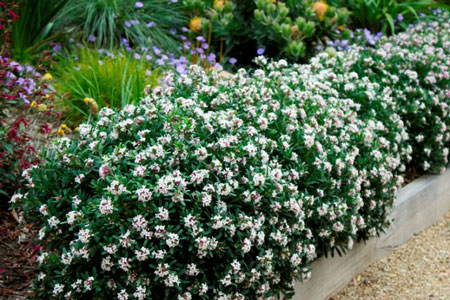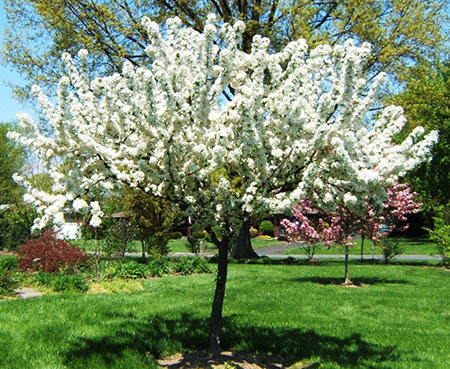July Gardening
What do we do in mid-winter?
Here in the south, late July is rose pruning time! After the worst of the frosts and before the new growth begins is the best time to prune so all the energy stored over winter is funnelled into new growth and not branches that you may eventually cut should you choose to prune in a later season.
How to Prune Roses
The task of pruning needn’t be complicated - the aim simply is to keep the centre of the rose bush open and airy by removing over-crowded canes.
1. Remove:
- Dead or diseased canes including stumps left from previous pruning.
- Weak and twiggy growth including any stick-like twigs that sprout from the main stems because these twigs will only produce a few scraggy leaves.
- Weak skinny canes, that are not capable of holding up a good cluster of blooms, should be removed also.
2. Cut Back:
- Damaged canes to a healthy bud.
- Any canes with brown flesh in the centre could be a sign of ‘dieback’ so keep cutting back, bud by bud, until you reach a healthy white centre.
- Crossing canes that are rubbing together - shorten one of them to stop this happening.
- Remaining canes should be cut back by half to one third of their existing height.
- Ideally cut about 6mm above an outward facing bud at an angle sloping downwards towards the back of the bud. The new shoots will naturally follow this outward direction, keeping the centre free of clutter.
- In addition, new shoots can be encouraged to grow from the base of older roses by gently scrubbing the gnarled bumpy base with a wire brush.

Standard Roses
Should be pruned in the same way as above except cut the canes back shorter to try to create a more even shape. A standard rose is simply a bush rose grafted onto a tall stem.
Climbers
With their unwieldy canes that sprawl in all directions, appear to present a slightly more challenging task but once you know the tricks, it’s easy!
Simply select and tie horizontally three to five good canes on each side of the plant and then cut the rest out. Trim all the side shoots on these horizontal canes back to two or three buds as this will allow a wonderful display of blooms all along the canes.
Rambler roses
Usually flower on new canes that were produced last summer and autumn.
Remove the canes that flowered last summer by cutting them out at the base – this will encourage new shoots. Then tie in the new long ‘fishing rod’ canes to replace the old canes. In spring snip back the tips of climbing and rambler roses because these ends will usually fail to ripen and flowers are never produced on these soft tips.
Have a read through our ROSES PRUNING article for more comprehensive information
During July, there are a few other important jobs that will help the next year’s performance of your roses, fruit trees and berry bushes.
Pests & Disease
When leaves fall they can carry spores of disease on to the ground so rake and gather up what you can to prevent these diseases from infecting next season’s growth.
Spray each bush and tree with a Copper fungicide to kill off any fungi. Follow this a 2-3 weks later with Yates Conqueror Oil that will smother overwintering mites and scale. For the spray to work effectively all parts of the plant must be thoroughly covered with spray.
Planting Out New Trees
Winter allows us some lovely idleness and time to take a critical look at some shrubs and even consider replacing a few non performers. It’s a great time for shifting plants.
A visit to our garden centre during July, when all our new seasons trees and shrubs are arriving, is an exciting and inspiring experience.

- Daphne ‘bholua’ which smothers itself in wonderfully perfumed starry ice-pink flowers from early winter to spring, and, unlike some of its other Daphne cousins, it flowers from the very first season.
- ‘Sweet Box’ (Sarcococca) is another late winter flowerer with a powerful fragrance on a neat evergreen shrub.
- ‘Winter Sweet’ (Chimonanthus praecox) appears to look like nothing more than a normal shrub but suddenly, in July/August, its waxy flowers of dusky yellow burst open with an airborne fragrance that is truly heavenly!
- ‘Witch Hazels’ (Hamamelis Mollis) with their spicy fragrance are one of the most dependable winter flowering shrubs. The naked branches, with its flowers of yellow petals that look like twisted ribbons, are excellent to pick and bring indoors.
New seasons small trees, that will form the architectural framework in your garden, include:
- Robinia ‘Frisia’ - a golden leafed beauty with fragrant ‘wisteria-like’ summer flowers held in clusters that can make a splendid statement. The foliage is green-gold in spring, bright gold in summer and rich buttery yellow in autumn.
- Magnolia ‘Iolanthe’ produces its large soft pink blooms very generously at an early age and is ideal in smaller gardens.
- Crab Apple (Malus floribunda) is a joy in the garden with gracefully arching branches smothered in crimson buds with white and pink blooms.
- New Zealand Lacebark (Hoheria) has beautiful pendulous clusters of white cup shape flowers that will surely delight.

Fruit Trees
It’s that exciting time of the year when new season fruit trees are now available from our garden centres and it is also the best time to plant them, as they have the rest of winter and all of spring to establish before they hit their first summer.
When choosing what fruit trees you are going to grow it’s important to select the types of fruit that you and your family most enjoy and then to pick the varieties that are most suitable and productive for your locality. The good news is that, here at Nichols, we’ve already tried to select and stock the varieties that will best suit our region, however, don’t hesitate to talk to our staff if you’re unsure.
Things to consider:
- A number of fruiting trees require a suitable pollinator to obtain good crops, which means you need to buy two different varieties to ensure that you have a good fruit set.
- Plant a fruit tree that has a double or triple graft - this means that two or three varieties of the same fruit normally will be produced on the same tree. Apart from being a great space saver, varieties chosen for the grafting will often be the pollinators, so you only need the one tree.
- Dwarf trees that come in a wonderful selection can be planted in the garden or in raised beds, or in a large pot on a patio or any paved area.
- Most dwarf trees are fully grown at two metres which means they can easily be reached for pruning, covering and picking.
Fruit Tree Pruning
Fruit tree pruning should begin as late in the winter as possible but before the sap starts to rise. Usually five or six main branches are kept, surrounding the main trunk, to allow light to penetrate into the tree. Short fruiting spurs will establish on these branches that will bear fruit for up to four years. In a few years these old spurs will be unable to nourish quality fruit so cut them back leaving stubs 2cm long and these will produce nice new shoots from the dormant buds that nature has provided. Remove all growth from the inside of the framework.
Read our Fruit Tree Pruning guide for more information.
Now that winter is here, spring can’t be far behind!
Happy gardening everyone.
7473